Start your collection of rare Disney memorabilia
Disney cartoon movies captured our hearts since it first appeared to the public. We collect Disney movies because we love to watch them over and over again. Other people collect anything that comes from Disney movies.
From a simple sketch of a mouse in 1928, an entertainment empire was born. But the magic of Disney has never been confined to the screen. It leaps into our homes and hearts through “Disneyana,” the vast world of Disney collectibles. Among the most cherished and valuable of these items are Disney figurines, tangible sculptures that freeze a moment of cinematic magic in time.
For decades, collectors have sought to capture the joy of Snow White, the romance of Cinderella, or the adventure of Peter Pan in finely crafted porcelain, crystal, and resin. This hobby, which grew from a niche interest in the 1980s to a global phenomenon, is a blend of nostalgia, artistry, and investment.
However, the world of Disney figurine collecting is as vast and complex as the Disney archives themselves. A simple Bambi figurine could be a $20 piece of ceramic or a $700 Lladró sculpture. The Walt Disney Classics Collection (WDCC) alone produced hundreds of pieces over 20 years, each with its own unique value.
The term Disneyana refers to any Disney collectible like toys, books, animation celluloid, themed-park souvenirs, etc. Disneyana hobbyists increase throughout 1980’s and 1990’s.
Previously, Disney Company licensed other manufacturing company to produce Disney figures. But in 1992, Disney Company started to produce their Disney collectible figures. Disney figurines come in different design, type, brand, materials, artist, stamp mark, etc.
Disney figurines collecting
Disney collectible figurines have a fun connotation among people. They bring childhood memories of those fun and lovable Disney cartoons or even the pleasure of vacationing at Disney World.
Disney classics collection caught not only the attention of collectors but of antique shops and collectible shops.
Some figurine Disney collection is made from porcelain and the process is similar in making Hummel figurines. Disney figurine made from porcelain is molded and fired in an oven. They are then painted and fired again.
Collectible Disney figurines spend months, or even years in the production process because Disney company make it sure that the sculpture resembles as much as possible to the original character in the movie. Others are made from glass, ceramic, plastic, clay, etc.
In January 1993, Disney introduced the Walt Disney Collectors Society. The quality and increasing values of limited Disney figures and rare Disney figurines have attracted large number of collectors. Collecting figurines of Disney reminds their youthful days and their love for the Disney characters.
In 1995 Disney launched the Enchanted Places, background scenes from the most popular animated films. To accompany the Enchanted Places series, Disney introduced (in 1996) miniature figures, designed by world renowned miniature artist Robert Olszewski.
Why Collect Disney Figurines? The Magic and the Motive
What drives someone to fill a display case with these magical pieces? The appeal is multi-faceted.
- Nostalgia: First and foremost, these figurines are a direct link to cherished childhood memories. They are a physical embodiment of the films that defined generations.
- Artistry: A high-end Disney figurine from Lladro or a WDCC piece is a genuine work of art. Sculptors and painters spend months, even years, perfecting the model to ensure it is a perfect, expressive representation of the original character.
- The Thrill of the Hunt: For many, the joy is in finding a rare Disney figurine. Scouring antique shops, browsing online auctions, and connecting with other collectors to find that one “grail” piece to complete a set is a reward in itself.
- Investment: While not all figurines appreciate, many rare Disney figurines have proven to be sound investments. Limited-edition pieces, retired items, and figurines from high-end brands often increase in value, sometimes significantly.
The 7 Key Factors That Determine a Figurine’s Value in USD
Before you can understand what your collection is worth, you must understand why it has value. A “Disney porcelain figurines price guide” is not a simple list; it’s an assessment based on these seven crucial factors.
1. Manufacturer & Backstamp This is the single most important factor. The name on the bottom dictates the piece’s pedigree, quality, and baseline value. A Lladró figurine is made with world-famous Spanish porcelain and artistry, while a Lenox piece boasts American-made fine china. The backstamp (the logo or mark on the bottom) is your key. It identifies the maker (WDCC, Lladró, Royal Doulton), and in the case of the WDCC, even the year it was produced.
2. Condition: The Non-Negotiable Factor In porcelain collecting, condition is everything. A flawless piece is the gold standard.
- Mint Condition: Absolutely perfect, as it was the day it was made. No chips, cracks, or repairs.
- Near Mint: May have a microscopic, almost invisible flaw, but nothing that detracts from the display.
- Good / Crazing: May have minor issues like “crazing” (a fine web of cracks in the glaze, common on older pottery like Beswick) or very slight paint wear.
- Damaged: Has visible chips, cracks, breaks, or discoloration.
- Repaired: A piece that was broken and glued back together. Even a professional repair drastically cuts the value.
A single chip can reduce a figurine’s value by 50-90%. When valuing your collection, be brutally honest about the condition.
3. Original Box & Certificate of Authenticity (COA) For modern collectibles (anything from the 1980s onward), the original packaging is part of the item. Serious collectors, especially of WDCC, will pay a significant premium for a piece with its original box, foam inserts, and Certificate of Authenticity (COA). An unboxed figurine may sell for 30-50% less than an identical one in its complete, mint-condition package.
4. Rarity, Edition Size & Retirement Scarcity drives value. This is determined in several ways:
- Open Edition: Produced for many years with no set production number. These are the most common.
- Limited Edition: Only a fixed number were ever made (e.g., “1,500 of 10,000”).
- Retired: An open-edition piece that is no longer in production. The shorter the production run, the rarer the piece.
- Event Exclusives: Figurines sold only at a specific event (like a Disney theme park anniversary or a D23 Expo) are instantly rare.
- Members-Only Pieces: Items sold only to members of a collector’s society (like the WDCS).
5. Character Popularity & Market Demand Like any market, value is driven by demand. “Evergreen” characters will always have a strong collector base.
- Top-Tier: Mickey Mouse, Minnie Mouse, Donald Duck, Cinderella, Snow White, Sleeping Beauty.
- Strong-Tier: Beauty and the Beast, The Little Mermaid, The Lion King, Winnie the Pooh.
- Niche-Tier: Characters from less-popular films like The Black Cauldron, Home on the Range, or Atlantis. New films can also create spikes in demand. Figurines from Frozen and Encanto have seen recent surges in popularity.
6. Artist Signatures & Special Markings A standard figurine can become a prized collectible if it’s signed. Some WDCC pieces were signed at special events by the original animators who designed the characters (like Marc Davis or Ward Kimball) or by the sculptor. These artist-signed Disney figurines command a massive premium.
7. Material “Figurine” is a broad term. The material is key to the value.
- Porcelain / Bone China: The high-end standard used by Lladro, Royal Doulton, and WDCC. It is delicate, holds fine detail, and has a high-perceived value.
- Stone Resin: A heavier, more durable material. It’s the medium of choice for Jim Shore (Enesco), whose folk-art-inspired Disney Traditions line is wildly popular.
- Crystal: Used by Swarovski and Arribas Brothers for sparkling, faceted sculptures.
- Ceramic: A more general, less-refined pottery used for many mass-market and vintage pieces.
The Major Manufacturers: A Deep Dive & Price Guide in USD
This is the core of any Disney figurines price guide. Identifying the maker is your first step to a successful valuation. Here are the most important names in the hobby, with updated 2025 secondary market values (what you could expect to see an item sell for on a site like eBay).
1. Walt Disney Classics Collection (WDCC)
- History (1992–2012): The “gold standard” for many collectors. This was Disney’s own premium, in-house line, dedicated to recreating specific film moments (“cels”) in porcelain. The attention to detail was legendary, with some pieces featuring 14k gold paint, bronze elements, or inset crystals.
- Identifying Marks: The backstamp is key. It features the WDCC logo (usually Steamboat Willie‘s ship’s wheel) and a small symbol indicating the production year. For example, the 1993 mark was a trebel clef, 1995 was a music stand, and 2000 was the Sorcerer’s Hat. The first-year mark of a piece is the most desirable.
- What to Look For: Complete sets with the green box and COA. Animator’s Choice pieces (marked with a small “A.C.”) and members-only society pieces are highly valued.
- Current Price Guide (USD – Secondary Market):
- Common Open-Edition Pieces: $50 – $150 (e.g., Thumper from Bambi, Gus or Jaq from Cinderella).
- Members-Only/Small Limited Editions: $150 – $400 (e.g., “Minding the Master” Cinderella, “Jaq and Gus in Sewing Basket,” Dumbo “Simply Adorable”).
- Large, Complex Scenes: $400 – $1,200+ (e.g., “A Lovely Dress for Cinderelly” (the pink dress scene), “The Mad Tea Party” set).
- “Grail” & Signed Pieces: $1,500 – $5,000+. The holy grail for many is the “Cinderella’s Dress” scene (“A Dream is a Wish Your Heart Makes”). An artist-signed version can fetch thousands.
2. Lladró
- History: The world-renowned Spanish porcelain house, Lladró, is famous for its smooth, pastel-glazed, and deeply emotional sculptures. Their Disney line translates these iconic characters into their signature artistic style. These are less “cartoony” and more “fine art.”
- Identifying Marks: The distinctive blue Lladró “flower” logo and “Made in Spain” will be on the bottom.
- What to Look For: Lladró’s craftsmanship is the selling point. They also produce “High Porcelain” pieces, which are massive, incredibly detailed, and extremely limited.
- Current Price Guide (USD – Retail & Secondary Market):
- Small Figures: $400 – $600 (e.g., individual Seven Dwarfs like “Dopey” or “Grumpy”).
- Medium Classic Characters: $500 – $900 (e.g., “Snow White,” “Mickey Mouse,” “Minnie Mouse,” “Bambi”).
- Large or Deluxe Figures: $1,000 – $4,000 (e.g., “Cinderella’s Arrival,” “Sorcerer’s Apprentice Mickey”).
- High Porcelain & Major Limited Editions: $5,000 – $40,000+. These are masterworks, such as the limited-edition Fantasia centaurette or the massive, intricate “Cinderella’s Castle.”
3. Lenox
- History: A premier American manufacturer of fine china, Lenox is known for its creamy, ivory-colored porcelain and liberal use of 24k gold accents. Their Disney figurines are elegant, graceful, and a staple of the bridal registry market.
- Identifying Marks: The gold “Lenox” script logo, often accompanied by “Disney” and “Made in USA” (though production has moved overseas in recent years).
- What to Look For: The “Disney Showcase” line is very popular. Their annual Christmas ornaments and wedding-themed toppers (“Mickey and Minnie’s Wedding”) are consistent sellers.
- Current Price Guide (USD – Retail & Secondary Market):
- Small Figures & Ornaments: $25 – $75 (e.g., “Tinker Bell’s Magical Gift,” “Mickey’s Christmas Carol” ornament).
- Medium Princess Figures: $80 – $200 (e.g., “Belle’s Enchanted Gown,” “Snow White’s Song”).
- Large or Complex Pieces: $250 – $600+ (e.g., “Cinderella’s Grand Arrival” carousel figurine, “Mickey and Minnie’s Romantic Sleigh Ride”).
4. Royal Doulton (& Beswick)
- History: This esteemed British company (est. 1815) has a long history with Disney. In 1969, they acquired Beswick, a pottery that had been producing rare Disney figurines (like Bambi and Snow White) since the 1950s. Royal Doulton continued and expanded these lines, known for their vibrant glazes and faithful character modeling.
- Identifying Marks: Look for the “Royal Doulton” lion and crown logo or the “Beswick England” script. Early Beswick pieces are particularly valuable.
- What to Look For: The Winnie the Pooh collection, based on the A.A. Milne illustrations, is perhaps their most beloved. The Snow White and the Seven Dwarfs line is also a classic.
- Current Price Guide (USD – Secondary Market):
- Small Winnie the Pooh Figures: $40 – $100 (e.g., “Pooh and Piglet, ‘A Sticky Situation'”).
- Classic Characters (Mickey, Donald): $75 – $150.
- Princess Figures: $100 – $250 (e.g., “Cinderella, ‘A Moment in Time'”).
- Early Beswick-Marked Pieces: $300 – $600+. A 1950s Beswick Snow White is a rare find and can be very valuable if in mint condition.
5. Goebel
- History: This German company is world-famous for its M.I. Hummel figurines. They also held a Disney license for many years, starting in the 1950s. Their pieces, especially the early ones, often have a softer, more rounded, “Hummel-like” aesthetic.
- Identifying Marks: The Goebel “Bee” mark or “W. Germany” stamp is a key indicator of vintage pieces.
- What to Look For: The early, 1950s-era figures from Bambi, Pinocchio, and Dumbo are the most desirable to vintage collectors.
- Current Price Guide (USD – Secondary Market):
- Common 1980s-90s Figures: $25 – $75 (e.g., small Mickey, Minnie, or Donald figures).
- Rare 1950s-60s “W. Germany” Figures: $100 – $350+, depending on character and condition.
How can I start collecting Disney figurines?
To start collecting Disneyana collectibles, the first thing to do is look for a guide that includes a wide variety of Disney collectibles. A little pocket-size Disney guide will do. There are so many Disney figurines to choose from but the better ones have detailed descriptions, photos, and item value. Disney figurines value vary in designs, shapes, sizes, materials, and brands.
Collectible Disney figures can be acquired in some online websites. There are many websites that sell Disney figurines. It could either be for sale or for auctions. Disney figurines are sold from authorize figurine dealers. Beware of the fake ones. You can choose from these different manufactures like Armani, Lladro figurines, Swarovski, Royal Doulton figurines, and Disney Company just to name few.
Before purchasing Disney figurines, it is wise enough to look for the different price list and the background of the figurines you are buying. You must be careful of fake figurine dealers. Disney collectible figurines vary from price, design, shape, size, materials used, and maker of the figurines.
The most popular size of collectible Disney figures is miniatures. These collectible Disney pieces are quite affordable. They come in different styles and designs depicting the different characters of Disney cartoon movies.
Here are some of Disney movie characters that were depicted, namely: Mickey & Minnie Mouse, Alice in Wonderland, Bambi, Donald Duck, Pinocchio, Goofy, Davy Crockett, Dumbo, Fantasia, Lady and the Tramp, 101 Dalmatians, Sleeping Beauty, Snow White and the Seven Dwarfs, Cinderella, Winnie the Pooh, Three Little Pigs, etc.
There were also Armani Disney figurines. These beautifully crafted figurines depicts exactly like princesses and prince of Walt Disney movies. Armani Disney Cinderella figurine is one the limited product of Armani Disney figures. The price of Armani Disney figurines ranges from $250 up to $4,000.
Llandro Disney figurines are one of the manufacturers of Disney cartoon figures. These figurines have delicate colors which evokes sentiments that touch the heart of collectors.
These elegant ladies sculpted with Disney cartoons has been a success in the world of figurines industry. Llandro Disney figures range its price from $400 to $3,500.
How will I recognize when was my Disney figurine made?
The Walt Disney classics collection sculpture bears a back stamp with Walt Disney’s signature and production year mark. The mark symbolizes major milestones in Disney history.
A production mark represents the calendar year during which the particular Disney figurine is made. Individual sculptures of an open edition Disney collectible figurines may carry different marks when production continues over the years.
The first production was in year 1992; the Walt Disney Classics Collection featured a steamboat wheel mark. The wheel honors Mickey Mouse’s debut in Steamboat Willie (1928). Disney figurines with this mark are the most valuable and desired by most collectors.
The 1993 production mark is a treble clef. The clef symbolizes the music in the Academy Award winning Silly Symphonies. Walt Disney explored and expanded the artistic, technical, and emotional range of animation.
The 1994 mark is a dancing flower. The flower represents Disney’s Flowers and Trees in 1932. This animated commercial film was the first the first film produced with full-color three-strip. And this movie cartoon won the first Academy Award for Disney.
The 1995 mark is a trowel. The trowel was used by practical Three Little Pigs cartoon in 1933. This animated short won the Academy Award in 1933. The animated short introduced the first hit song for Disney “Who’s Afraid of the Big Bad Wolf”.
The 1996 mark is a sailor’s hat. The hat represents Donald Duck’s on-screen debut in The Wise Little Hen in 1934. “Who? Me? Oh, no, I’ve got a bellyache” With these eight words, the world’s most quick tempered duck was born.
The 1997 mark is a music stand. The stand represents Mickey Mouse’s first color cartoon The Band Concert in 1935. The cartoon is renowned for its superb character animation of band leader Mickey and mischievous peanut vendor Donald Duck.
The 1998 mark is the pickax. The Dwarfs’ diamond mining tool helps celebrate the Diamond (70th) Anniversary of the Walt Disney Company.
The 1999 mark is the Sorcerer’s Hat. In 1940, Fantasia was recognized as one of Walt Disney’s greatest experiments, combining the art of animation with the beauty of classical music. And of course, it’s lauded for giving Mickey Mouse his most famous role as the Sorcerer’s Apprentice.
The 2000 year mark is a feather – Dumbo’s magic feather from Dumbo (1941).
The 2001 year mark is the butterfly. The butterfly was chosen in honor of the 1942 animated classic Bambi.
The 2002 year mark is the sombrero. The sombrero was chosen in honor of the 1943 animated classic ‘Saludos Amigos,’ featuring this year’s member’s only figural release, Pedro.
The 2003 year mark is the Golden Harp. The golden harp was chosen in honor of the 1947 feature film Fun and Fancy Free.
The 2004 year mark is the Bumble Bee from Melody Time (1948). It is an animated feature produced by Walt Disney.
The 2005 year mark is the glass slipper from Cinderella (1950).
The 2006 year mark is the Teacup. The teacup was chosen in honor of the 1951 cartoon musical film Alice in Wonderland.
The 2007 year mark is the Captain Hook’s Hook. The hook was chosen in honor of the 1953 animated film Peter Pan – a mischievous boy who can fly and magically refuses to grow up.
The 2008 year mark is the crown of Aurora from 1959 fairy tale classic Sleeping Beauty.
The 2009 year mark is the paw print from 1961 American animated film One Hundred and One Dalmatians.
Other Disney figurines manufacturers write the name of their company at the bottom of the figure. Same as to Disney Company they also indicate the year it was made. Some manufactures inscribe the word retired to their product to indicate its type.
Rare Disney figurines
Like any other collectible figurines there are also rare Disney figurines. Disney figurines having the first mark year usually are the most valuable. Some Disney figurines are produced only within a year with limited productions. Other collectible Disney figurines are made only for those who are members of Disney collectors club.
Retired Disney figurines are figurines that are produced in a limited amount. When the desired amount of Disney figurines is acquired the mold is destroyed. The figurines are then classified as retired Disney figurines.
What are the different licensed vendors of Disney figurines?
In order to produce different styles of Disney figurines, Disney have licensed different vendors to produce their products such as WDCC, Olszewksi Story time Disney figurines, Royal Doulton Disney figurines, Armani Disney figurines, Goebel, Precious Moments Disney figurines, Pewter, Lenox, Swarovski, Mattel, Hamilton, Department 56, and Harmony Kingdom.
Disney Collectors Club
In January 1993, Disney Company introduces the Walt Disney collectors Society. The Disney Collectors club has grown over time. Collectors are reminded of their youth days and their love for the Disney characters. Each collector has a story to tell about his or her collection. Having friends while collecting is the best way to find out about what’s new on the market or what might be coming up for sale.
How to Clean Disney figurines
Regular cleaning of Disney figures does not only improve the appearance of the figurines but it increases the value of it. A periodic cleaning of figurines will keep them beautiful for generations to come.
In cleaning figurines, make sure that the dusting toll is gentle and lightweight such as feather duster, chamois or soft-bristled paint brush. In washing Disney figurines, it is preferred to use warm water. The air holes of figurines should also be covered to avoid the entrance of water into the hollow interior. Rub the stained area with a soft cloth.
To avoid discoloration of Disney figurines, avoid the figurine from the exposure of sunlight. It is advised to display the Disney figurines in a cool dry place. Using a newspaper in wrapping the figurine is a big no no, because the color of the ink will blend to the figurine.
The Future of Disney Figurine Collecting
The hobby continues to evolve. While the market for some 1990s open-edition pieces has softened, the demand for rare, limited-edition, and high-end items remains incredibly strong. The inclusion of Pixar, Marvel, and Star Wars characters into the Disneyana family has opened up entirely new avenues for collectors, ensuring that the magic—and the hunt—will continue for generations to come.
Whether you are a new collector enchanted by the magic or a long-time enthusiast cataloging your treasures, your Disney figurine collection is a tangible piece of animation history. Care for it, curate it, and most of all, enjoy it.

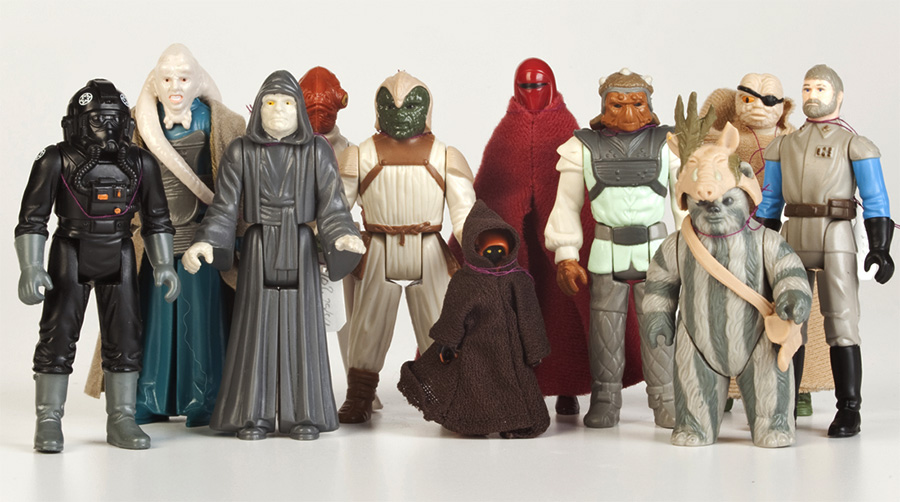
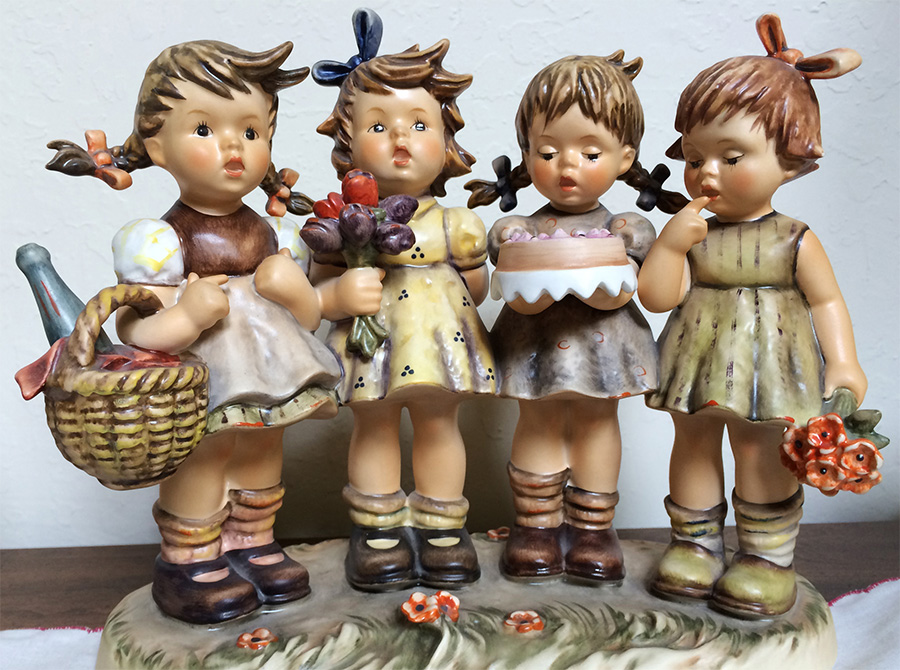
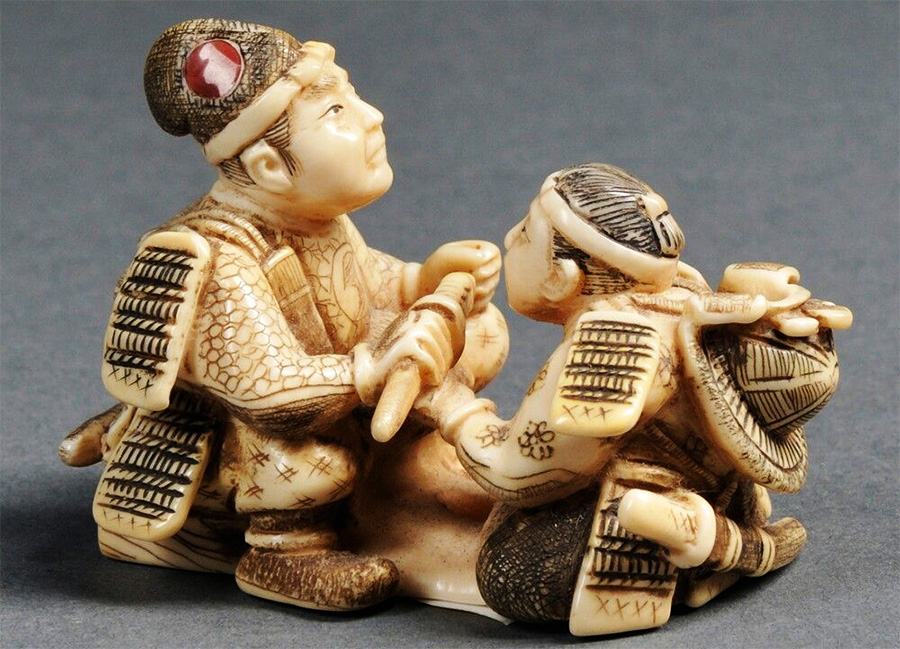
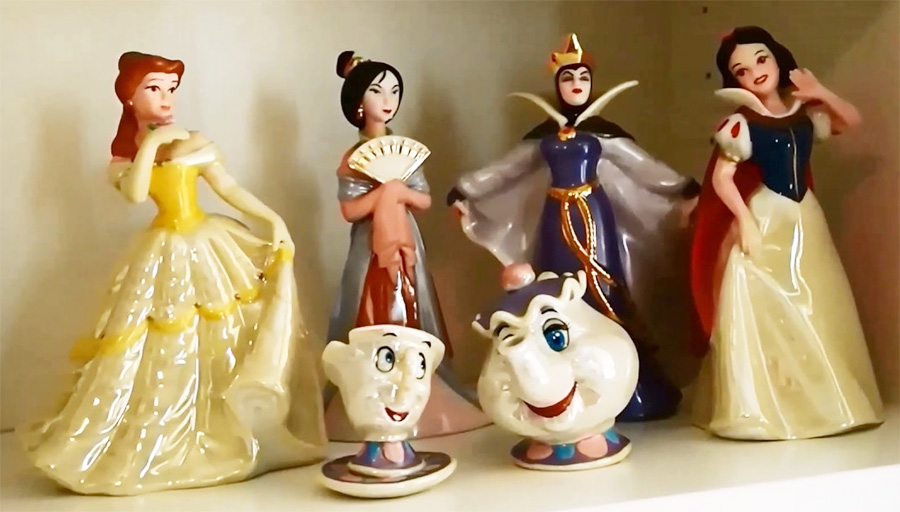
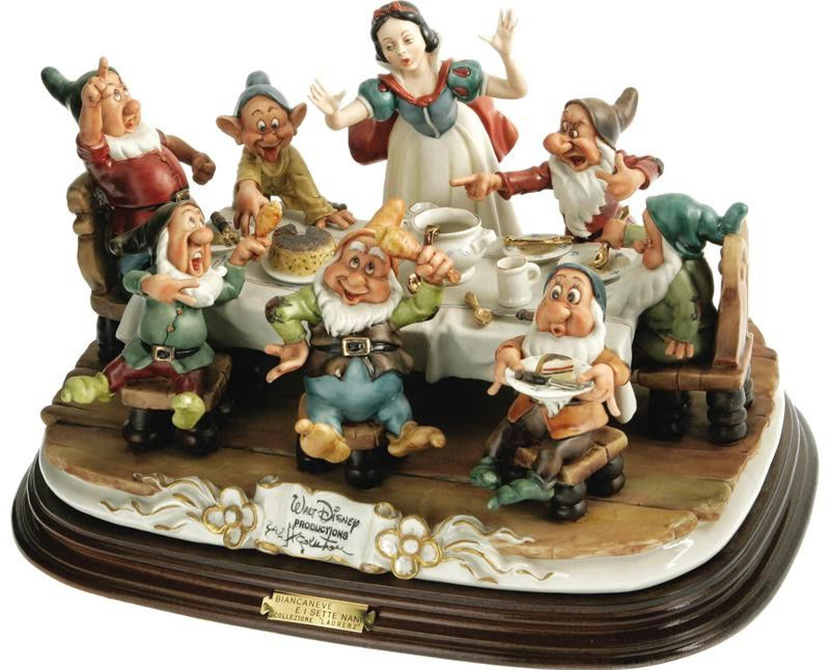
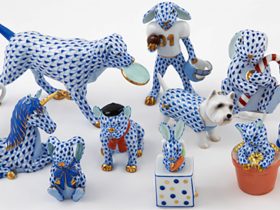
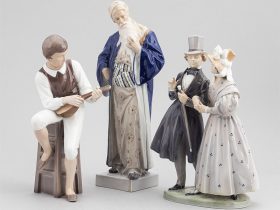
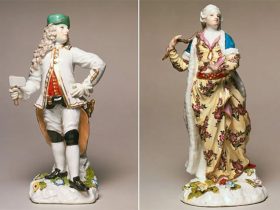

Leave a Reply